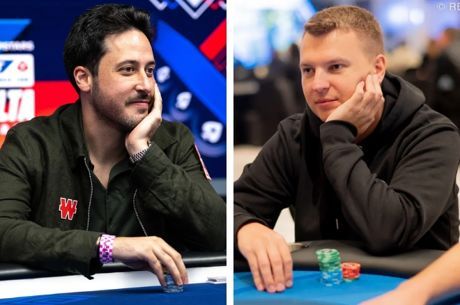Picking Appropriate Targets to Pressure on a Tournament Bubble

During a tournament’s middle and late stages, the significance of stack sizes increases, making it crucial to remain aware at all times what your opponents have chip-wise and how their stacks compare to yours. Especially when approaching the bubble, it becomes all the more important to be wary of players whose stacks are close to or greater than yours, as they are the ones who can potentially cost you the most should you tangle with them.
A hand from the bubble of last year’s EPT Deauville High Roller well illustrated the importance of remaining aware of others’ stack sizes while also providing a useful lesson about selecting the right targets to pressure. In fact, what the hand shows is an instance of a player perhaps picking the wrong players to pressure.
That event experienced a rather excruciating bubble period. From the 115 entries just the top 17 spots paid, and so when there were 18 players left play went to hand-for-hand. As it turned out, it would take nearly two more hours for the next elimination to come and the bubble finally to pop.
The blinds were 4,000/8,000 with a 1,000 ante, and it folded around to Dominik Panka who raised to 16,000. Ramin Hajiyev reraised to 41,000 from the small blind, then Michael Tureniec four-bet shoved all in for 301,000 total from the big blind.
The action back on Panka, he announced he also was reraising all in for a bit less than what Tureniec had from the button, and Hajiyev called for his tournament life from the small blind. (The trio are pictured above during the hand, with Panka on the left, Tureniec in the center, and Hajiyev standing at right.) Here are the hands they tabled:
Panka: A♠A♥
Hajiyev: K♣K♥
Tureniec: A♦Q♣
The board ran out 7♠J♥J♣7♣4♦, which allowed Panka’s aces to hold up as the best hand, giving him a big boost heading into the latter stage of the tournament which he would in fact win the next day. Meanwhile Hajiyev was eliminated on the bubble and Tureniec was left with just 37,000 or a little over 4 big blinds.
While the hand itself was obviously a cooler for Hajiyev, other considerations can be made regarding the play of the hand including a possible mistake made by Tureniec.
To start the hand, Panka opened with a fairly standard min-raise from the button. Hajiyev, the shortest stack of the three, three-bet the action out of position from the small blind. Knowing the eventual hands of these two players, the reasoning behind their actions is obvious. Almost without exception, you’ll want to be raising and reraising before the flop with pocket aces and pocket kings, the two best hands in hold’em.
Action then folded to Tureniec who looked down at AxQx-offsuit and his stack of about 37 big blinds. While Tureniec did in fact have both of his opponents covered and so couldn’t be eliminated during the hand, he only bested Panka by just over four big blinds and Hajiyev by six big blinds. This means that if he shoved and lost, he would be left crippled and if Hajiyev survived then Tureniec would be likely to bubble the tournament.
Standard bubble play dictates that you should be putting pressure on shorter-stacked opponents who are likely to fear being eliminated just before cashing in the tournament. That being said, in a situation like this in which each player involved in the hand has similarly-sized stacks, the idea of risking most of your chips with a marginal hand before the flop becomes less profitable.
Is AxQx-offsuit “marginal”? It’s certainly a strong starting hand and worth opening with a raise if you are dealt it and are folded to before the flop. But when facing a raise and reraise before you can act with such a hand, it becomes trickier to play — especially from the big blind and against two opponents who have stacks nearly as big as yours.
Essentially, the pressure should be put on the smallest stacks at the table during bubble time. Those stacks are most likely to fall and if you set them all in you are then forcing them to make a decision for their tournament life. If you have a stack like Tureniec’s, for example, where you hold a healthy 37 big blinds, picking on a short stack should also run little risk for you because even if you lose the hand you will still hold a respectable amount of chips.
Tureniec, however, opted to put preflop pressure on players who both held nearly as many chips as he did. As it happened, both players woke up with premium hands and suddenly Tureniec was looking for a miracle board to improve his A♦Q♣.
Now, in this particular instance, Tureniec was fortunate enough that both players had big hands and that Panka had Hajiyev dominated with his aces against the latter’s kings. This led to Panka eliminating Hajiyev and the bubble bursting, allowing Tureniec to make the money. But, in many other cases, if just one of the two players woke up with a hand and Tureniec lost, he would be left severely short and very likely would have become the bubble boy.
Tureniec was indeed eliminated shortly after the bubble burst to finish 17th, collecting €18,000 for his efforts in the €10,300 buy-in tournament. But if he had opted not to play a huge pot before the flop with similarly medium-stacked players, he would have been able to take a larger stack into the money and truly put himself in a position to move up the pay ladder.
Get all the latest PokerNews updates on your social media outlets. Follow us on Twitter and find us on both Facebook and Google+!









